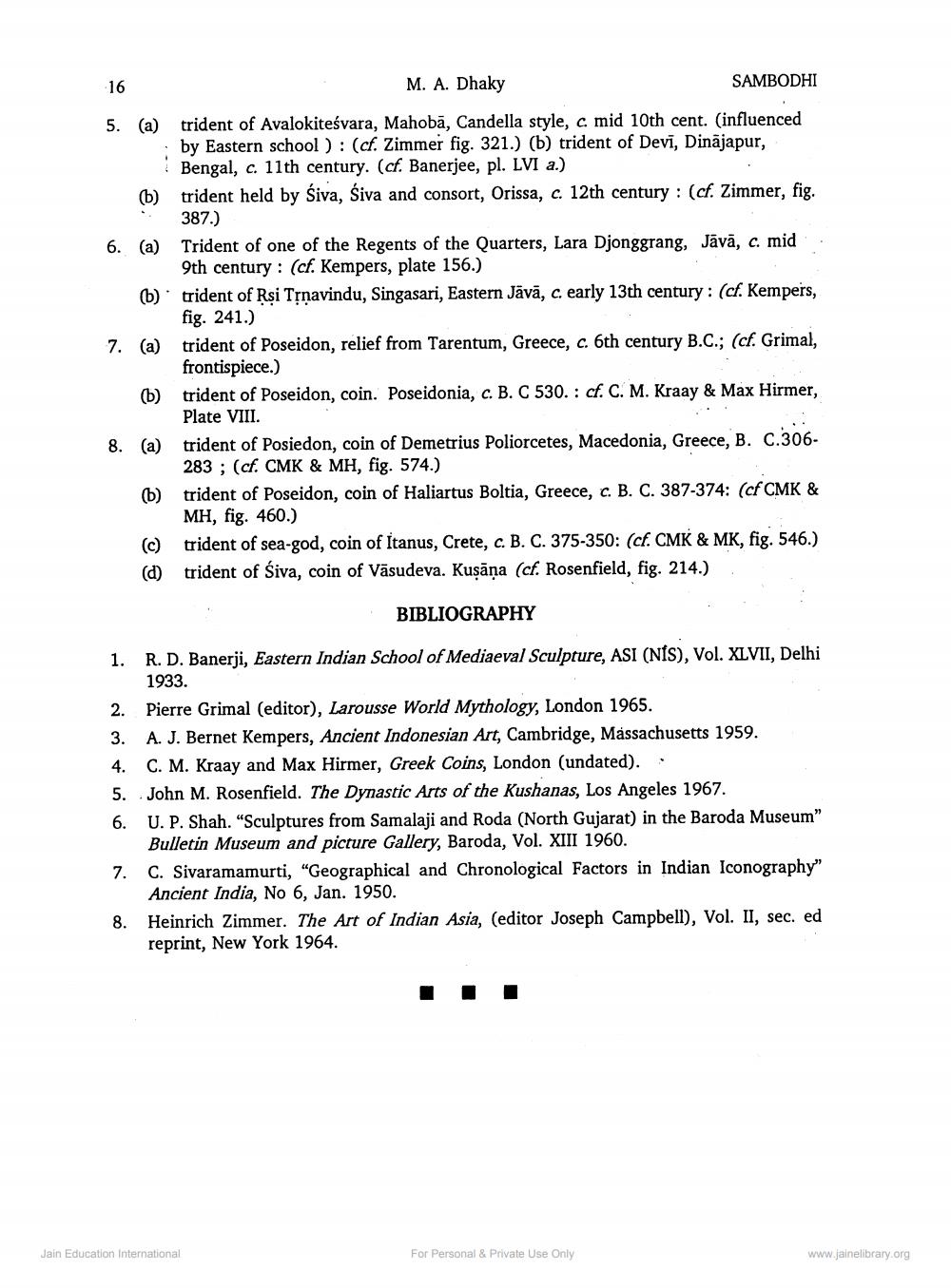________________
M. A. Dhaky
SAMBODHI
5. (a) trident of Avalokitesvara, Mahobā, Candella style, c. mid 10th cent. (influenced
by Eastern school ) : (cf. Zimmer fig. 321.) (b) trident of Devī, Dinājapur,
Bengal, c. 11th century. (cf. Banerjee, pl. LVI a.) (b) trident held by Śiva, Śiva and consort, Orissa, c. 12th century : (cf. Zimmer, fig.
387.) 6. (a) Trident of one of the Regents of the Quarters, Lara Djonggrang, Jāvā, c. mid
9th century: (cf. Kempers, plate 156.) (b) * trident of Rși Trnavindu, Singasari, Eastern Jāvā, c. early 13th century: (cf. Kempers,
fig. 241.) trident of Poseidon, relief from Tarentum, Greece, c. 6th century B.C.; (cf. Grimal, frontispiece.) trident of Poseidon, coin. Poseidonia, c. B. C 530.: cf. C. M. Kraay & Max Hirmer,
Plate VIII. (a) trident of Posiedon, coin of Demetrius Poliorcetes, Macedonia, Greece, B. C.306
283 ; (cf. CMK & MH, fig. 574.) (b) trident of Poseidon, coin of Haliartus Boltia, Greece, C. B. C. 387-374: (cf CMK &
MH, fig. 460.) (c) trident of sea-god, coin of Itanus, Crete, c. B. C. 375-350: (cf. CMK & MK, fig. 546.) (d) trident of Śiva, coin of Vāsudeva. Kuşāņa (cf. Rosenfield, fig. 214.)
BIBLIOGRAPHY
1. R. D. Banerji, Eastern Indian School of Mediaeval Sculpture, ASI (NES), Vol. XLVII, Delhi
1933. 2. Pierre Grimal (editor), Larousse World Mythology, London 1965. 3. A. J. Bernet Kempers, Ancient Indonesian Art, Cambridge, Massachusetts 1959. 4. C. M. Kraay and Max Hirmer, Greek Coins, London (undated). 5. John M. Rosenfield. The Dynastic Arts of the Kushanas, Los Angeles 1967. 6. U. P. Shah. "Sculptures from Samalaji and Roda (North Gujarat) in the Baroda Museum"
Bulletin Museum and picture Gallery, Baroda, Vol. XIII 1960. 7. C. Sivaramamurti, "Geographical and Chronological Factors in Indian Iconography"
Ancient India, No 6, Jan. 1950. 8. Heinrich Zimmer. The Art of Indian Asia, (editor Joseph Campbell), Vol. II, sec. ed
reprint, New York 1964.
Jain Education International
For Personal & Private Use Only
www.jainelibrary.org




